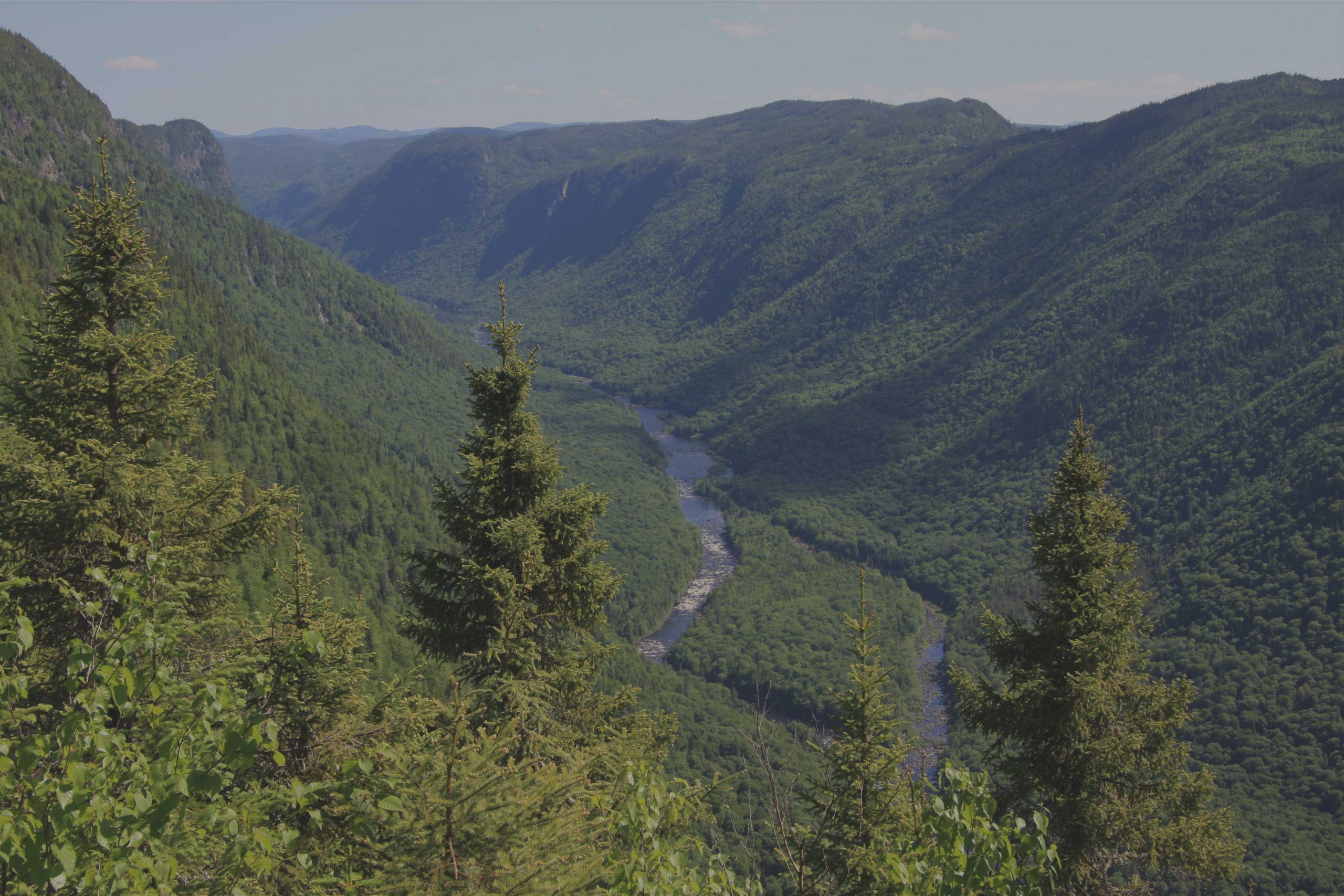OFFICIAL NAME: Bosnia and Herzegovina
AREA: 51,129 km2
POPULATION: 3,288,115
OFFICIAL LANGUAGES: Bosnian
Croatian
Serbian
CAPITAL: Sarajevo
POPULATION OF THE CAPITAL: 696,731
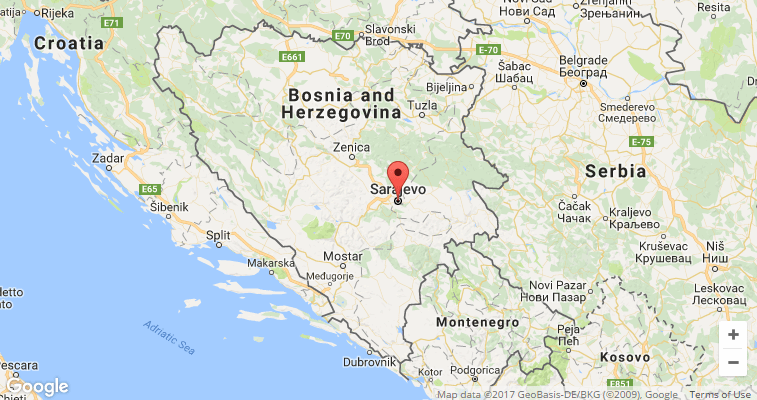
CONTACT
Mr Dušan Nešković
Adviser to the Minister
Ministry of Foreign Trade and Economic Relations of Bosnia and Herzegovina
Sector for Agriculture, Food, Forestry and Rural Development
T: +387 33 953 500
E: dusan.neskovic@mvteo.gov.ba
Deputy: Mr Savo Krunić
Adviser to the Minister
Ministry of Foreign Trade and Economic Relations of Bosnia and Herzegovina
Sector for Agriculture, Food, Forestry and Rural Development
- Brief Country Profile
Bosnia and Herzegovina is located in the western part of the Balkan Peninsula and covers an area of 51,129 km2. In 1990, Bosnia and Herzegovina held its first democratic multiparty elections and in early 1992 it became an independent country (B&H Statistical Agency, 2013). B&H has borders with Serbia to the East, Montenegro to the South East, Croatia to the North and West, and a 12 kilometer coastline on the Adriatic Sea. Its landscape varies from high altitude central mountains to arable land in the north and Mediterranean vineyards in the south, with most of the major towns being located in valleys. Climatically, Bosnian summers last from May to September and are warm and humid, whilst winters tend to be foggy and snowy and last from November to February. Autumn and spring are usually short. Bosnia and Herzegovina consists of two entities and the Brčko District (BH). The Federation of Bosnia and Herzegovina (B&H) covers 50 percent of the territory and Republic of Srpska (RS) about 49 percent of the territory. Brčko District covers the remaining one percent of the total territory (Agency for Statistics of Bosnia and Herzegovina, 2014).
The current administrative divisions are based on the lines drawn up as part of Dayton Peace Agreement in 1995. The Federation of Bosnia and Herzegovina, Republic of Srpska and Brčko District all have their own constitutions. According to the preliminary results of the Census in Bosnia and Herzegovina the total population is 3,791,622, out of which 2,371,603 live in FB&H, 1,326,991 in the Republic of Srpska and 93.028 in Brčko District (Agency of Statistics of Bosnia and Herzegovina, 2014). The Federation of Bosnia and Herzegovina is decentralized. It consists of 10 Cantons (each with its own government) and 79 municipalities. The Government of the Federation of Bosnia and Herzegovina shares and delegates some of its competencies with the Cantonal administrations. Both the Government and the Cantons have the right to determine policy and to adopt laws that pertain to any of their competencies. Where competencies are further delegated to the municipalities (the lowest administrative level), their activities are financed and supervised by the Cantons (Agency for Statistics of Bosnia and Herzegovina, 2014). Republic of Srpska is centralized and has no Cantons. It shares and delegates some of its competencies directly with 58 municipalities and six cites. The Brčko District (comprising the entre territory of the former Brčko municipality) is a self-governing administration under the direct jurisdiction of Bosnia and Herzegovina (Agency for Statistics of Bosnia and Herzegovina, 2014).
BiH FORESTRY AND FORESTS
Forestry and Forest
- Forest area
Forest coverage and its change
Total area of forests and forest land in B&H is 2,709,800 ha or 53% of the total area, out of which 1,3 milion (1,291,900) ha or almost 50% (47,6) are high forests and 917,800 ha or almost 35% (33,9) are coppice forests. The rest includes other wooded land and comprises shrubs, barren forest land and other forest areas.
Area of forests and forest land per capita is about 0,6-0,7 ha/per capita.
Forests and forest land occupy the surface area of approximately 27,100 km2, or about 53% of the territory of B&H: about 23,000 km2 of this land is covered with forests and about 4,000 km2 is forest land.
Land use in B&H has been strongly affected by the war and post-war development in the country following the post-Yugoslavian development. There has been a clear trend of land use change with different manifestations regarding the shape of rural areas and agricultural and forest areas. Major impact on the land use is a large scale migration of population within the country which resulted in intensified urbanization and appearance of abandoned land as a consequence. In practice, this means an increase of biomass, but a decline of active forest management and quality production of timber. As a consequence, re-forested areas have turned into unmanaged forests of pioneer species or shrubs, and formerly managed coppice forests are no longer being looked after. Both types of development are not considered to support the development of higher value chains for forest goods and services. Factual increase of the forest area was a consequence of afforestation (minor) and natural reforestation in mainly abandoned land (major). The assumption is that more than 300,000 ha of abandoned private land only in the Republic of Srpska was naturally reforested. Precise data will be known after the results of the Second National Forestry Inventory are officialy published.
The Second NFI was conducted in the period 2006-2009, but due to some metodological issues, offical data have not been published so far. Land cover of Bosnia and Herzegovina is presented in Picture 2.
Picture 2. Land cover of Bosnia and Herzegovina
- Forest classification
B&H is mainly covered by natural forests. Plantation production, in the true sense, is organized only on smaller areas in private ownership, but these areas negligible, far below 1% of the total area. There is a large potential for the formation of plantations of woody fast-growing species (primarily poplar and willow), especially along the Sava and Bosna rivers. Such plantations can be suitable for obtaining biomass for energy purposes, as well as for cellulose woods and logs. In addition to reducing pressure on natural woods, a great advantage of plantation production is also a potential for carbon storage, which is certainly one of the most important possibilities.
- Forestry structure
The most common are mixed forests (more than 60%), especially forests of fir, spruce and beech. The most common broad leaf is beech (1/3 of all species), and the most common conifers are fir and spruce (1/3 of all species). Oak is not that common, and is mostly found in private forests.
- Forest stock volume, increment and logging
Total wood stock volume in the state owned forests is about 353 million m3 (352,650,273), and an additional wood stock volume is expected in private forests, 70 to 80 million m3. That means that total wood stock volume is more than 430 million m3, out of which approximately 40% are conifers and 60% are broadleaf.
Average annual wood stock increment in the state owned forests is about 9,7 million m3 (9,717,662), and forests has additional annual wood stock increment of 2,2 million m3 is expected in private forests. That means that total annual wood stock increment is almost 12 million m3 in average
Average gross felled timber is about 5,6 million m3 , and precise data for the period from 2010-2015. are presented in Table 1.
Table 1. Gross felled timber in Bosnia and Herzegovina, period 2012-2015
| Year | State forests | Private forests | Total |
| 2012 | 5,003,041 | 364,155 | 5,367,196 |
| 2013 | 5,246,348 | 383,471 | 5,629,819 |
| 2014 | 5,211,844 | 369,423 | 5,581,267 |
| 2015 | 5,374,679 | 471,300 | 5,845,979 |
| 5,208,978 | 397,087 | 5,606,065 |
If we compare gross felled timber with annual wood stock increment, it can be seen that in B&H is felled less than 50% of annual wood stock increment. There are several reasons for that, but one of the most important is average availability of forest roads, which is under 10 m/ha.
- Felling operation
Production of forest assortments in the last 10 years is presented in Table 2.
Table 2. Production of forest assortments in B&H, period 2007-2016.
| Assortment | 2007. | 2008. | 2009. | 2010. | 2011. | 2012. | 2013. | 2014. | 2015. | 2016. |
| Logs, conifers | 1,195,805 | 1,308,068 | 1,028,723 | 1,060,401 | 1,047,823 | 1,176,542 | 1,256,218 | 1,254,549 | 1,275,679 | 1,335,845 |
| Logs, broadleaf | 727,703 | 733,200 | 568,364 | 597,570 | 567,670 | 613,353 | 643,300 | 596,841 | 654,938 | 655,681 |
| Total logs | 1,923,508 | 2,041,268 | 1,597,087 | 1,657,971 | 1,615,493 | 1,789,895 | 1,899,518 | 1,851,390 | 1,930,617 | 1,991,526 |
| Other assortments | 1,829,428 | 1,969,620 | 1,831,938 | 1,956,928 | 1,884,858 | 2,006,474 | 2,124,653 | 2,089,652 | 2,109,337 | 2,177,579 |
| Total | 3,752,936 | 4,010,888 | 3,429,025 | 3,614,899 | 3,500,351 | 3,796,369 | 4,024,171 | 3,941,042 | 4,039,954 | 4,169,105 |
Trend of the production of forest assortments in the last 10 years is presented in Chart 1.
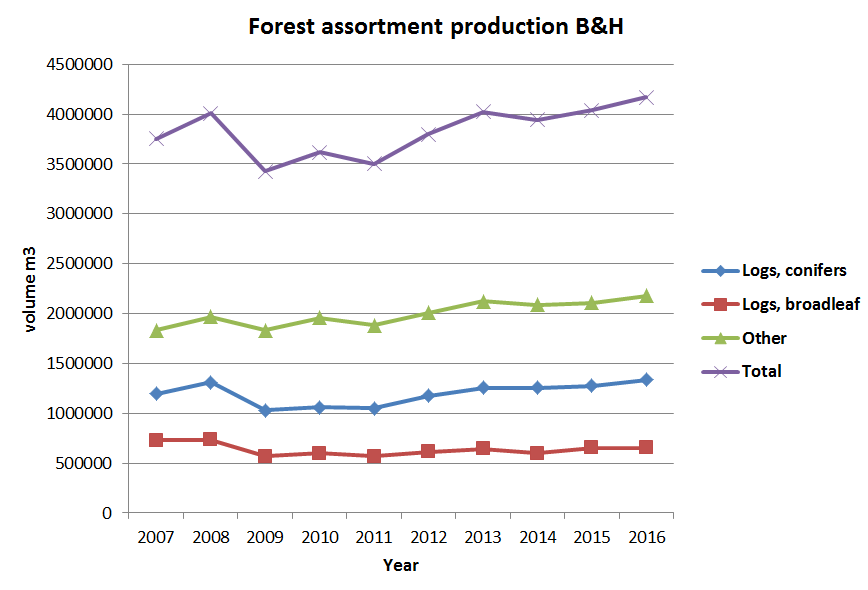
Chart 1. Production of forest assortments in B&H in the last 10 years
ECONOMIC ASPECTS OF FORESTS
- Forest Management
Institutions associated with forestry
Apart from responsibilities for foreign trade and international economic relations, the Ministry of Foreign Trade and Economic Relations (MOFTER) is responsible for tasks and duties falling within the jurisdiction of the State of B&H, including defining policies and basic principles, coordinating activities and consolidating entity plans with those of international institutions in the areas of agriculture, energy, environmental protection, use of natural resources and tourism. Within MOFTER, Sector for agriculture, food, forestry and rural development exists, but regarding forestry issues it mainly deals with coordinating activities.
In entities, at all administrative-political levels, forestry is the responsibility of ministries for agriculture, water management and forestry (in some cases this is simply the Ministry of economy) while wood-processing industries (sawmilling, pulp and paper) in both entities are under the responsibility of ministries for industry, energy and mining. There is also a difference in terms of type of companies dealing with forestry (public companies established by cantonal authorities in FB&H and entity authorities in RS) and wood-processing industries (mainly private companies). According to the Article III. of the Constitution of B&H (Responsibilities of and relations between the institutions of Bosnia and Herzegovina and the entities), the following maters are the responsibility of the institutions of Bosnia and Herzegovina: foreign affairs; foreign trade; customs and monetary policies; finances of the institutions and for the international obligations of B&H; immigration, refugee and asylum policy and regulations; international and inter-entity criminal law enforcement (including relations with Interpol); establishment and operation of common and international communications facilities; regulation of inter-entity transportation and air traffic control. In forestry, however, the Constitution of B&H transfers competences to entity level (FB&H and RS) and Brčko district. The institutions at the two entities and Brčko district levels are responsible for drafting and implementing forest policy and legislation. In the FB&H, these responsibilities are even more decentralized down to cantonal level. Part III. Of the Constitution of FB&H (Division of responsibilities between the Federation and the cantons) describes that the Federation (among other responsibilities) shall have exclusive responsibility for economic policy and land use policy at FB&H level, but both the Federation Government and the Cantons shall have responsibilities for environmental policy and use of natural resources. As appropriate, these responsibilities may be exercised jointly or separately, or by the Cantons as coordinated by the Federation Government. Table 3. shows the responsibilities of sub-sectors in B&H on the state level and in different entities in the sectors of forestry, sawmilling, pulp & paper, bioenergy
Table 3. Responsibilities of sub-sectors in B&H at the state level and in different entities (Forestry, sawmilling, pulp & paper, bioenergy)
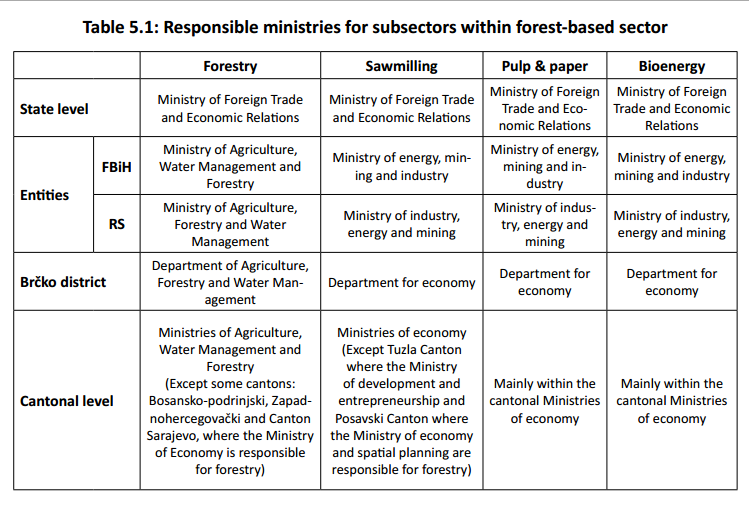
The organization of the forestry sub-sector is a complex issue and differs between the entities and Brčko district. In FB&H the ownership of the public forest resource rests with FB&H which transfers management rights to ten Cantons. The Cantons transfer these rights to Cantonal Forest Management Companies (only one in each canton), which are established in compliance with the Law on Forests from 2002. In seven cantons these Cantonal Forest Management Companies are established as 100 percent public companies owned by the Canton. The only exception is Canton 3 (Tuzla Canton), where the Cantonal Forest Management Company has been established as a joint stock company. This organization is not fully implemented in two cantons; in Canton 2 (Posavina Canton) – lowland area where forests play minor role and Canton 7 (Herzegovina-Neretva Canton) where some municipality-based companies are not integrated in existing Cantonal Forest Management Company. At the level of the Federation there is a Forestry Department within the Ministry of Agriculture, Water Management and Forestry with a unit responsible for legal matters (all aspects relating to forest law and related legislation) and an FB&H Forest Office (FFO) which deals with forestry development and support and has an overall monitoring role. At the Cantonal level, responsibility for forestry rests with the relevant Ministry within which there is a Cantonal Forest Office (CFO) whose main function is to control the activities of the cantonal forest management company and provide advice and support to private forest owners.
In Republic of Srpska, there is the Forestry Department within the Ministry of Agriculture, Forestry and Water Management, which is responsible for forests and forestry. The Forestry Council is a forum for high level discussion on forestry and forestry related issues and developments established under the Forest law 2008. It has nine members comprising representatives of the ministry, other state bodies, institutions and organizations which are related with forest sector, local communities, NGOs, forest owners and others. Public forest company ‘’Šume RS’’ manages the public forests in RS. It has a hierarchical organizational structure with headquarters, twenty six Forest Management Units (FMUs), a Research Development and Design Centre, which undertakes forest management planning, a Centre for Seedling Production and a Karst Management Centre. Each FMU has a sub account, although all financial flows essentially go through the headquarters. The FMUs report to the headquarters and are managed on a Forest Management Area (FMA) basis, comprising a number of Forest Districts. In Brčko district, where forestry plays a subordinated role, there is the Department for Agriculture, Forestry and Water management. Within this Department, there is Sub-Department for Forestry and Water management dealing with the implementation of forest and game-management legislation, forest management planning and executing projects, forest protection and other public administrative issues. As the majority of forests are owned by private forest owners, there is no public forest company in Brčko District. Besides the above mentioned public forest companies, some public forests within the protected areas are managed by public institutions responsible for management of protected areas (e.g. National parks, protected landscapes etc.).
NGO sector includes several organizations dealing exclusively with forestry issues, and most of these organizations deal with ecological issues, which among other field include forestry as well. Although there are no many such organizations, it is necessary to mention those that deal with private forests’ owners joining, whose main objective is to improve the current condition and to protect private forests’ owners’ rights. Although there are some promising examples from countries in transition where forest associations helped to mobilize and organize private forest owners, they are still widely lacking in B&H. The Association of private forest owners “Naša Šuma” can be seen as an exception. It was established in 2006 in municipality of Čelinac (Republic of Srpska) with the mission to become a common voice of all private forest owners in B&H for gaining their rights and implementation of legislative obligations related to forest management. In addition, professional associations of forestry engineers are formed in both entities, but some of them should certainly be at a higher level (especially in the Republic of Srpska).
Organization of the forest sector in B&H is presented at Chart 2.
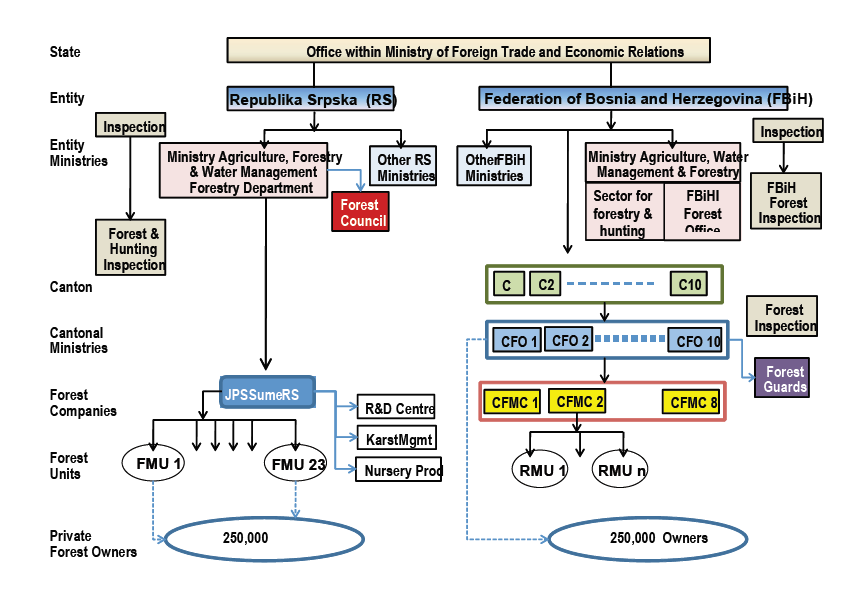
Chart 2. Organization of the forest sector in B&H
Employment in Forestry sector
Most of the employees engaged in forestry sector work in Public Forest Enterprise, and the total number of workers for the period between 2012-2015 (at the end of the year) is presented in Table 4.
Table 4. Number of employees in PFE in B&H, period 2012-2015
| Year | Republic of Srpska | Federation of B&H | Total | Index of change (%) |
| 2012 | 4285 | 4658 | 8943 | |
| 2013 | 4328 | 4806 | 9134 | 2,14 |
| 2014 | 4437 | 4943 | 9380 | 2,69 |
| 2015 | 4537 | 4943 | 9480 | 1,06 |
It is clear that the number of employees is constantly growing, although not drastically, and graphical presentation is given in the Chart 3.
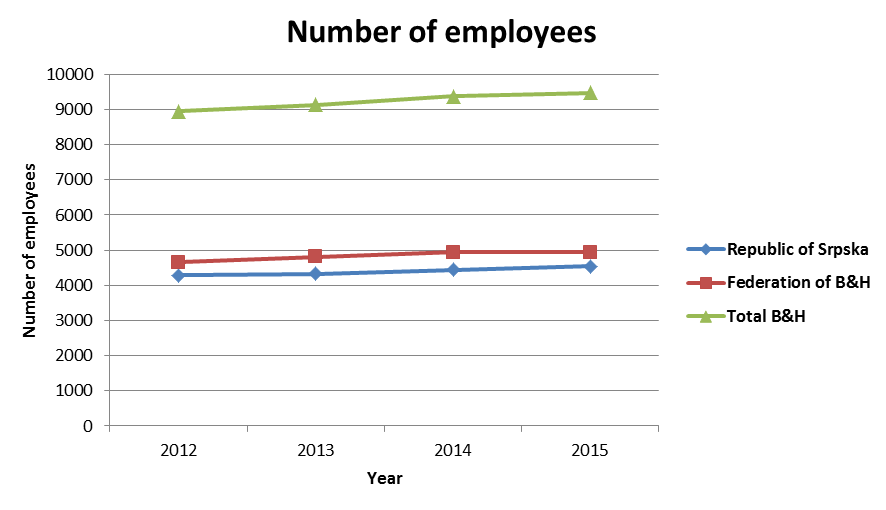
Chart 3. Number of employees in Public Forest Enterprises in B&H, 2012-2015
Although there are variations, beside this number of about 9,500 employees, there are other employees in the sector of Forestry engaged in different institutions/organizations. Some of those are ministries (entity, cantonal and district level), inspection, Forest office (only in Federation of B&H), NGO sector, etc. but total number of employees in the sector of Forestry should not exceed 10,000 employees.
- Forest ownership
As shown earlier, forest land in B&H is predominantly publicly owned. Since data on the new NFI on this issue are still lacking (not published and therefore not publicly available), we have to build on the reported ratio of 80 percent public forests and 20 percent private forests with almost equal share in both entities RS and FB&H. The percentage of private forests is highest in the lowland areas where the forest coverage is the smallest, while state forests are located in areas with high forest cover. According to the constitutional set up of the country, the ownership of public forests rests with the two entities (FB&H and RS). As concerns the Cantons (in FB&H) and municipalities (in both entities), they have no ownership rights over public forests unless they are granted it in kind or buy it. In Brčko District, there are only a few thousand hectares of public forests managed by the public forest administration (Sub-Department for Forestry and Water management). Still, the term “state forests” is widely used to refer to public forests and it can be recognized in both official documents and day-to-day life.
Approximately, 2,2 million ha (2,186,300) or 81% is in state ownership, and more than half a million ha (523,500) or 19% is in private ownership. It is necessary to emphasize that the Second NFI is finished, but the results are not officially published yet, so it can be expected that the total area of private forests is larger (some estimates are more than 30% of forest and forest land area).
Dynamic change in the proportion of the forest ownership
Agrarian reform in the former Yugoslavia in 1945. limited the ownership of private forests to 8-30 ha, depending on the type of terrain. Although it is generally considered that the agrarian reform had a very strong impact on private land ownership in the former Yugoslavia, the land nationalization process influenced mainly private agricultural properties, while the greater part of private forest estates, due to constant inheritance, was already below the prescribed maximum of 8–30 ha. Since the 1990s, processes such as privatization, denationalization and restitution, have qualified the issue of private land ownership at the top of public policy debates. Although ownership restitution is not yet completed in B&H, the comparison of forest inventory results conducted by the Austro-Hungarian monarchy (1880–1885) with the current area of private forests in B&H, indicates that the share of private forests will probably not significantly increase as a result of the restitution process.
Greater changes in the proportion of the forest ownership can be expected if the abandoned private land, which was naturally reforested, should be officially defined as forest in the land register. This process is very slow, and greater changes are not expected in near future.
- Forestry policy
The regulatory framework in B&H is complex, and poses a major issue when addressing the needs for adaptive and participatory forest management.
As shown earlier, the sector is organized on the entity level. As regards forest legislation this entails:
- Main strategic document in the Republic of Srpska is Forestry Development Strategy 2011-2021. It provides overall strategic framework for conducting policy matters related to the management of state and private forests and forest land in the Republic of Srpska. According to the Law on Forests, this Strategy represents the basis for creating the Forestry program of the Republic of Srpska.
- The Republic of Srpska’s Law on Forests (Official Gazette of the RS no. 75/08 from 2008) provides the overall framework and is supported by a series of 32 regulations adopted during 2009–2010. relating to timber sales and technical norms of forest management. This Law was revised in 2013 (Official Gazette of the RS no. 60/13), and it is still in force.
- In Federation of B&H, preparation for the development of a strategic document National Forest Program (NFP) is completed, but this strategic document is not in force yet.
- Based on the Decision by the Constitutional Court of the Federation of Bosnia and Herzegovina of 14 April 2009 (Official Gazette of the FB&H no. 36/09) Law on Forests (Official Gazette of the FB&H no. 20/02, 29/03 and 37/04) is no longer in force as of 27 November 2009. As a preliminary solution pending the adoption of the new law on forests, the Government of the FB&H adopted the Regulation on Forests (Official Gazette of the FB&H no. 83/09, 26/10, 33/10 and 38/10). As per the Decision of the Constitutional Court of FB&H no. U-28/10 of 23 March 2011 (Official Gazette of the FB&H no. 34/11), the Regulation on Forests should have been in force until 6 December 2011. Since the Regulation on Forests as of 6 December 2011 is no longer in application and as the Law on Forests hasn’t been adopted yet, the forest sector is legally unregulated at the level of FB&H.
- Brčko District adopted its own Forest Law in 2010. Based on its provisions, there are Forest management plans for public forests (owned by the District) and for private forests (both plans for the period 2007–2016).
Investigation and monitoring of forestry resources
At the level of the Federation there is a Forestry Department within the Ministry of Agriculture, Water Management and Forestry with a unit responsible for legal matters (all aspects relating to forest law and related legislation) and an FB&H Forest Office (FFO) which deals with forestry development and support and has an overall monitoring role. At the Cantonal level, responsibility for forestry rests with the relevant Ministry within which there is a Cantonal Forest Office (CFO) whose main function is to control the actives of the cantonal forest management company and provide advice and support to private forest owners. Also, in the FB&H exists Forest Inspection (FFI), which performs overall inspection services safeguarding the implementation of all actions relating to the law on forests within FB&H. Also, Cantonal Forest Inspection (CFI) forms part of the Cantonal Inspection Service. Their role is essentially the same as that of the FB&H Forest Inspection
In the Republic of Srpska, there is the Forestry Department within the Ministry of Agriculture, Forestry and Water Management, which is responsible for forests and forestry. Within this department, there is an organizational unit which is in charge of the control of forest users (PFE ‘’Šume RS’’). The Forest and Hunting Inspection (FHI)
was transferred from the MAFWM in 2005. to the General Inspection Service, which has a total of twelve Inspectorates. The FHI has six territorial divisions with a total of 17 inspectors. It carries out forest control measures for both public and privately owned forests based on ten year and annual forest management plans.
BiH INSTITUTIONS ASSOCIATED WITH FORESTRY
Forestry Research and Education
Forestry Research
The holders of scientific-research work in B&H are faculties, primarily those in Banja Luka and Sarajevo. One of the main funding sources of scientific-research activities are the funds allocated annually by relevant ministries. FB&H Office for Forestry within FB&H Ministry of Agriculture, Water Management and Forestry developed mechanisms for continuous funding of research projects, while other administrative institutions are funding the research periodically. In the Republic of Srpska, there is a public invitation for allocation of special purpose funds for forestry sector published annually (PES- pay for environmental services), and scientific-research projects are included in this invitation. In addition, scientific-research work is partly financed by public forest enterprises, as well as by the funds of domestic and foreign organizations, such as USAID, SIDA, GIZ, JICA, UN FAO, UNDP, and foreign countries embassies. It is also necessary to mention funds from IPA, EUREKA, HORIZONT 2020, FP7, etc. More should be done in order to apply for such funding sources, which primarily requires strengthening the stuff potentials for writing applications and for implementation of project activities.
In B&H, there is one scientific-research institution in the field of forestry, Institute of Forestry and Horticulture, which operates within Faculty of Forestry Sarajevo. Institute of Forestry and Wood Processing should be formed as well, within Faculty of Forestry Banja Luka.
In addition to these, research activities are also implemented by NGO sector, although to a lesser extent and mostly within cross-sectorial cooperation with ecology and energy sectors (biomass primarily).
Research areas that were in the focus of funding are: silviculture, forest protection, analysis of forest biodiversity, forest genetics, forest policy and economics, forest management planning, renewable energy sources.
Forestry Education
In Bosnia and Herzegovina, there is a discrepancy between the market needs for experts in the field of forestry and the number of higher education institutions. It is evident in the fact that there are four forestry faculties (or study programs), in the country with a population of less than 4 million. Currently, there is no specialized university of forestry, but the tertiary forestry education in B&H is organized at four universities, namely University of Sarajevo, University of Banja Luka, University of East Sarajevo and University of Bihać. Forestry study at University of East Sarajevo is organized within Agricultural Faculty in Vlasenica (RS). Forestry study at University of Bihać is organized within Biotechnical Faculty in Bihać (FBiH).
Education program at the I cycle of the studies at Faculty of Forestry, University of Banja Luka, lasts four years and there is an invitation for 75 full-time students at the study program Forestry and 40 full-time students at the study programs published annually. This faculty is the only one with study program Wood processing. Education process includes 47 exams + graduation exam, and basic subjects are: Forest management, Forestry economics, Foresth, Forest exploitaiton, Seed and seedlings, Increase and yield of forests, Forest protection, Dendometry and Forest inventory. Starting from 2013, teaching process is organized as 4 years of undergraduate studies, plus one year of graduate studies, plus three years of PhD studies (4+1+3).
Education program at the I cycle of the studies at Faculty of Forestry, University of Sarajevo lasts three years and an invitation is published annualy for 92 full-time students at study program Forestry and Horticulture. This is the only faculty in B&H that annually publishes an invitation for enrollment of foreign citizens. This year, invitation for 8 foreign citizens is published. Education process includes 36 exams + graduation exam, and basic subjects are: Forest management, Forest economics, Forest harvesting, Forest exploitation, Increase and yield of forests, Forest protection, Dendometry and Flow planning. II cycle of studies lasts for 2 years, and starting from the school year 2013/2014, at this faculty are organized PhD studies according to the Bologna principles.
Education program at the I cycle of studies at Biotechnical faculty, University of Bihać, Department for Forestry, lasts 4 years and an invitation for enrollment is published annually for 25 full-time students at the study program Forestry. Education process includes 46 exams + graduation exam, and basic exams are Forest management, Forest economics, Forest harvesting, Forest exploitation, Increase and yield of forests, Forest protection, Dendometry and Integral forest protection.
Obrazovni program na I ciklusu studija na Faculty of Agriculture, University East Sarajevo, study program Forestry, lasts for four years and an invitation for ennrollment of 40 full-time students at the study progrma Forestry. Education process includes 40 exams + graduation exam, and basic subjects are Forest management, Forest economics, Forest harvesting, Forest exploitation, Increase and yield of forests, Establishment of forests and plantations, Forest protection and Dendometry.
Forestry study in Vlasenica and Bihać started 3-4 years ago and it is still too early to evaluate their impact on the overall forest education situation in BiH.
Table presentation of higher education institutions including the basic data, is given in Table 5.
Table 5. Basic data on higher education institutions in forestry sector in B&H
| Faculty | Years of study (I+II+III cycle) | Study programs at the I cycle | Number of students enrolled, I cycle | Number of exams, I cycle | Basic subjects |
| Faculty of Forestry, University of Banja Luka | 4+1+3 | Forestry and Wood processing | 75 full-time at Forestry and 40 full-time at Wood processing | 47 exams + graduation exam | Forest management, Forest economics, Forest harvesting, forest exploitation, Seed and Seedling, Increase and yield of forests, Forest protection, Dendrometry, Forest inventory, Integral ofrest protection, Flow planning. |
| Faculty of Forestry, University of Sarajevo | 3+2+3 | Forestry and Horticulture | 92 full-time for both programs and 8 foreign students | 36 exams + graduation exam | |
| Biotechnical faculty, University of Bihać, Forestry Department | 4 | Forestry | 25 full-time | 46 exams + graduation exam | |
| Faculty of Agriculture East Sarajevo, study program Forestry | 4 | Forestry | 40 full-time | 40 exams + graduation exam |
Stay informed
Get the latest news and information about China and CEEC Cooperation – Forestry Mechanism.

